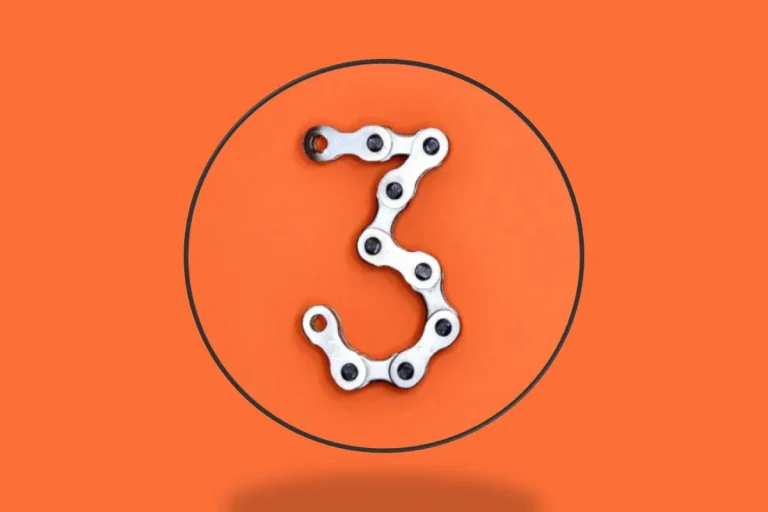Tylosaurus Spiritual Meanings and Symbolism

Tylosaurus was a huge marine reptile that lived in the oceans around 90 to 65 million years ago. It belonged to the mosasaur family, a group of fierce predators that ruled the ancient seas.
This creature could grow up to 40 feet long and weighed several tons, making it one of the top hunters of its time. With a streamlined body, strong jaws, and sharp teeth, it easily caught fish, squid, and even other marine reptiles.
One of its most unique features was its rounded, hammer-shaped snout, which may have helped it grab and control prey. Its powerful, paddle-like limbs allowed it to swim swiftly, making it a dominant force underwater.
As an apex predator, Tylosaurus played a key role in keeping the ocean’s ecosystem balanced. Studying its life helps us understand not just its physical traits but also the deeper symbolic meanings tied to this ancient beast.

Key Takeaways
- Tylosaurus symbolizes power, resilience, and protection, embodying the raw might and guardianship of the natural world.
- As an apex predator, Tylosaurus represents the interconnectedness of life and inspires a sense of humility before the grandeur of nature.
- The Tylosaurus’ transformative journey from land to sea mirrors personal growth and the capacity for profound change.
- Tylosaurus is associated with intuition, psychic awareness, and the ability to tap into the wisdom of the subconscious.
What Does It Mean When You See a Tylosaurus?
Seeing a Tylosaurus—whether in fossils, books, or art—can stir up feelings of awe and respect for nature’s power. Its massive size and fierce appearance remind us of the wild, untamed forces that once ruled the planet.
This ancient predator symbolizes strength and resilience, encouraging us to face challenges with courage. Just as Tylosaurus adapted and thrived for millions of years, it reminds us that we too can overcome obstacles with determination.
It also represents the mysteries of the deep ocean, a place full of secrets yet to be discovered. Its presence can inspire us to appreciate the incredible diversity of life and our connection to Earth’s long history.
Tylosaurus Symbolism
The Tylosaurus stands for raw power and survival, showing us how life persists even through drastic changes. As a top predator, it reflects the fierce energy needed to navigate challenges and stay strong.
This creature also highlights the balance of nature, where every living thing plays a part. Its existence depended on a healthy ocean ecosystem, teaching us about the importance of harmony in our own lives.
When we think about the Tylosaurus, it can spark a sense of wonder about the past and our place in the world. Its story encourages us to grow, adapt, and respect the natural forces that shape our lives.
7 Spiritual Meanings of Tylosaurus
1. Tylosaurus as Protector
The Tylosaurus was a massive predator that ruled the ancient seas. With its powerful body and sharp jaws, it sends a strong message of protection and strength. Its appearance alone would have scared off anything that dared to come too close.
Many spiritual traditions see it as a guardian of the waters. People believe this ancient reptile watched over the ocean and kept travelers safe as they crossed dangerous paths. Its size and strength made it a natural symbol of defense.
Because it survived in tough marine environments, the Tylosaurus also represents resilience. It adapted and fought through challenges, showing us what it means to stand strong even when things get rough.
When danger showed up, the Tylosaurus didn’t back down. It used its force and instincts to protect itself and others around it. This makes it a lasting symbol of support and safety in many cultures.
Even today, thinking of the Tylosaurus as a protector can help people feel more secure during uncertain times. It reminds us that strength can come in many forms—even through ancient creatures from long ago.
2. Tylosaurus and Transformation
The Tylosaurus didn’t start off as a sea creature. Long ago, its ancestors lived on land, but over time, they changed. This big reptile eventually became a powerful swimmer, showing how living beings can transform to survive.
This change from land to sea makes it a symbol of personal growth. It teaches us that we can leave old ways behind when they no longer help us. Letting go of the past is part of moving forward.
As the Tylosaurus adapted to life in water, it changed its body completely. That shift helps us understand that change is not only possible—it’s often necessary. People go through emotional and mental changes too, even if we don’t notice right away.
Each transformation takes time, strength, and patience. But like the Tylosaurus, we can develop the tools we need to handle new environments and situations.
Its journey reminds us that we also have the ability to grow and become stronger versions of ourselves—especially when we accept the changes life brings.
3. Tylosaurus and Intuition
The Tylosaurus had strong senses that helped it survive in the deep sea. Even in darkness, it could find its way. Spiritually, this links it to intuition—a quiet inner voice that helps guide us when things aren’t clear.
In many belief systems, the Tylosaurus is seen as a symbol of deep knowing. It didn’t rely only on sight or sound, but used instinct to move through the water and find food.
This kind of spiritual wisdom is something people can connect with during meditation or moments of reflection. The Tylosaurus teaches us to listen carefully to what’s going on inside.
By tuning in to this inner guidance, we can make better decisions. It helps us see beyond the surface of things, looking deeper into emotions and situations.
Following the Tylosaurus’ example, we can practice trusting our instincts more. That way, we develop a stronger sense of direction in both everyday life and spiritual matters.
4. Tylosaurus and Adaptability
Life is always changing, and so was the world of the Tylosaurus. It lived in oceans full of surprises and shifting conditions. But instead of struggling, it adapted—which is why it’s a strong symbol of flexibility and survival.
The Tylosaurus didn’t stay in one place. It moved between shallow waters and the open sea. Its body was designed to go where it needed to, helping it hunt and stay safe.
This kind of movement reminds us that staying flexible helps us deal with life’s ups and downs. We may not live in oceans, but we still face changes that need quick thinking and calm action.
If we hold on too tightly to old ways, we may miss chances to grow. The Tylosaurus shows us that it’s okay to change plans or try new paths when needed.
Its story encourages us to stay open, stay strong, and adjust to new challenges with confidence and courage.
5. Tylosaurus and Strength
One of the first things people notice about the Tylosaurus is its strength. With its huge jaw and long body, it ruled the sea. Spiritually, this reminds us of the inner strength we carry inside ourselves.
When we face hard times, it helps to think about creatures like the Tylosaurus. It didn’t give up when things got tough. Instead, it used what it had to push forward.
Its strength wasn’t only physical. It had mental and emotional power too—facing danger without fear and surviving even the harshest environments.
Thinking about the Tylosaurus can help us tap into our own strength. Maybe it’s the strength to speak up, to keep going, or to believe in ourselves when things feel uncertain.
Let this ancient reptile remind you that power comes from within, and it grows stronger the more we trust it.
6. Tylosaurus and Courage
The Tylosaurus didn’t run from threats. With strong jaws and a brave spirit, it faced whatever came its way. That fearless nature makes it a symbol of courage in the spiritual world.
When life brings hard situations, many people feel scared. But courage means showing up anyway, even when fear is present. The Tylosaurus did exactly that in its world.
It teaches us to face our own challenges without backing down. Whether it’s a big test, a difficult conversation, or an important life change, we can learn to move forward with boldness.
Courage doesn’t always feel loud or dramatic. Sometimes it’s quiet—like choosing to try again or to speak your truth. The Tylosaurus reminds us that being brave matters, even in small ways.
Keep this ancient symbol in mind when you need an extra push. Its story helps bring out the bravery that’s already in you.
7. Tylosaurus and Wisdom
The Tylosaurus was more than a fighter. It also had great wisdom. This shows up in how it survived, hunted, and moved through the ocean with care and skill.
Spiritually, the Tylosaurus teaches us to stay alert and aware. Like it tracked its prey, we can train ourselves to pay closer attention to what’s happening in our own lives.
It didn’t fight every current. Instead, it worked with the water, flowing through it with ease. That’s a lesson in going with what life offers, instead of always fighting back.
Real wisdom means knowing when to act and when to pause. The Tylosaurus shows that thoughtful decisions lead to better outcomes—especially when backed by experience.
Let the Tylosaurus guide you to stay mindful, grow wiser, and explore the deep parts of yourself that hold answers you may not have seen before.
Tylosaurus Symbolism in Different Cultures and Contexts
The Tylosaurus, a giant marine reptile from prehistoric times, holds rich symbolic value across many cultures. People from different parts of the world have connected this creature with strength, mystery, and spiritual depth. While it no longer swims in our oceans, its image and meaning continue to live on in stories, beliefs, and traditions.
This ancient sea creature has inspired legends and sacred meanings in Native American tribes, Celtic lore, Nordic tales, and Eastern philosophies. Each culture viewed the Tylosaurus through its own lens, shaping unique interpretations that reflect their relationship with nature, water, and life’s deeper mysteries.
Let’s take a closer look at how this powerful marine reptile has been represented and respected in different parts of the world. Each cultural view helps us better understand how people saw their world and the creatures within it. The Tylosaurus is more than an ancient fossil—it’s a powerful symbol of life’s mysteries and the forces that lie beneath the surface.
Native American Culture
Among many Native American tribes, the Tylosaurus was more than a creature of the past—it was a sacred force tied to water and spirit. Its large body and sharp teeth made it a symbol of power, courage, and natural strength. Different tribes had their own unique views of this ancient sea dweller.
For the Plains tribes, the Tylosaurus was believed to be a water guardian. They saw it living in lakes and rivers, watching over these sacred places. Its presence was both respected and feared, as it represented the power of nature that could both protect and punish.
In the Southwest, some Puebloan groups connected the Tylosaurus to the moon and the changing tides. They believed its swimming movements followed the rhythm of the sky and sea. It became a link between the earthly and spiritual worlds.
Farther north, coastal tribes of the Pacific Northwest carved the Tylosaurus into totem poles. These poles were not just decorations; they told stories and honored spirits. For them, the Tylosaurus was a protector of waters and a guardian spirit.
Across all these tribes, the Tylosaurus held deep spiritual meaning. It reminded people of the forces of nature, the flow of life, and the mystery that lives in water and spirit alike.
Celtic Culture
In Celtic culture, the Tylosaurus found a place among ancient legends and sacred stories. The Celts were known for their deep respect for nature, and the oceans were a key part of their world. The Tylosaurus, as a sea creature of great size and strength, became a strong symbol within their beliefs.
To many Celts, the Tylosaurus was a guardian of the sea. Its presence represented the wild, untamed power of ocean waters. People saw it as a force that could protect or destroy, depending on how it was treated. Its image brought both fear and respect.
The creature’s ability to move through deep waters connected it to the idea of spiritual journeys. The Celts believed in otherworlds that lay beyond what could be seen. The Tylosaurus, diving deep into hidden places, became a guide through the unknown.
Its power and mystery were reminders that life was full of unseen forces. Whether in myths or sacred tales, the Tylosaurus reminded the Celts that true strength came from nature and from the deep places within the soul.
Even today, some people studying Celtic traditions look to the Tylosaurus as a symbol of transformation and the power of the unseen.
Nordic Culture
In the cold seas of the Nordic world, the Tylosaurus became part of ancient myths and sailor stories. For Norse people, the sea was both a lifeline and a dangerous force. Large sea creatures like the Tylosaurus were seen as powerful beings tied to strength and survival.
The Norse saw the Tylosaurus as a mighty beast of the deep. It stood for power that could not be controlled. To survive in the harsh northern environment, people needed to be strong and clever—qualities they also saw in this creature.
Many stories described the Tylosaurus as a sea guardian, protecting certain areas but also testing those who crossed its path. Its size, sharp teeth, and fearsome look matched the dangers of the icy northern waters.
Because it thrived in a hard environment, the Tylosaurus came to symbolize resilience and endurance. It reminded people that life was full of challenges, and only those who adapted could thrive.
This ancient marine reptile became a symbol of the harsh beauty of the Nordic world, and of the strength it took to live in it.
African Culture
Across African cultures, the Tylosaurus holds different meanings depending on the region. In some places, it’s a sign of strength and power, while in others, it stands for change and spiritual growth. The African view of the Tylosaurus shows how deeply people connect to nature and the stories they create from it.
In parts of West Africa, the Tylosaurus is seen as a sea protector. It watches over the waters and punishes those who disrespect nature. Its fierce look and strong body symbolize the ability to overcome challenges and keep balance in the world.
In contrast, some East African groups link the Tylosaurus to transformation. They see it as a reminder that life is always changing. Fossils of the Tylosaurus help tell the story of time, showing how the world shifts and evolves.
For many, the Tylosaurus also acts as a spiritual guide. It connects the people with the water spirits and deeper energies of the earth. Through ceremonies and stories, the Tylosaurus teaches about respect, survival, and the deep bond between humans and nature.
This powerful sea reptile continues to live on in Africa—not in the oceans, but in the hearts and minds of the people.
Eastern Culture
In Eastern cultures, especially in China and Japan, the Tylosaurus takes on sacred meanings. Its powerful image is connected to creatures from myths and legends, and its traits help explain ideas about strength, peace, and protection.
In Chinese traditions, the Tylosaurus is linked with the dragon, a creature that brings good luck, wisdom, and power. Its size and strength made it a perfect match for the image of the dragon, which was seen as a guide and guardian in ancient stories.
In Japan, some people connect the Tylosaurus to the kirin, a gentle and holy animal that appears when peace and harmony are near. This shows a different side of the Tylosaurus—not as a fierce hunter, but as a symbol of safety and calm.
Other Eastern cultures see the Tylosaurus as a bridge between the spiritual and natural worlds. Its deep-sea home and strong body represent secrets, balance, and the cycles of life.
This creature continues to inspire people across Asia, reminding them of the deep forces that shape both the earth and their inner lives.
Hindu Culture
In Hinduism, the Tylosaurus is seen as a symbol of divine power and protection. Many people believe it is connected to Varuna, the god of the oceans and keeper of universal order. Varuna’s role is to watch over the waters and make sure everything stays in balance.
The Tylosaurus, with its giant jaws and powerful body, shows Varuna’s strength. It is often used in stories and pictures to help people understand the mighty power that controls the seas and protects the world.
Some Hindu beliefs also tie the Tylosaurus to Shakti, the force that gives life and energy to everything. Its strength shows the force behind creation and the power needed to keep the universe moving.
People might give offerings or say prayers to symbols of the Tylosaurus to ask for safety, health, and guidance. In these rituals, the creature acts as a protector and a sign that the divine is always present.
This connection between a prehistoric creature and a spiritual god shows how deep and meaningful Hindu beliefs are.
Arts and Literature
The Tylosaurus has appeared in stories and artworks around the world. Its large, powerful shape and mysterious past make it a popular symbol for many artists and writers. Whether carved in stone or painted on scrolls, it has always sparked imagination.
In ancient Mesopotamia, artists showed the Tylosaurus as a strong sea creature. They used detailed carvings to show its sharp teeth and long body, making people respect the natural forces it stood for.
In East Asia, the Tylosaurus was used in tapestries and scrolls. It stood for deep thinking, long life, and the balance between earth and spirit. Its graceful shape helped express ideas about life and nature.
In modern times, books and films use the Tylosaurus to explore ideas like survival, human impact on nature, and the mysteries of the deep ocean. These stories remind us that ancient creatures still have lessons to teach.
Art keeps the Tylosaurus alive—not in flesh, but in meaning and memory.
Mythology
In myths, the Tylosaurus takes on many forms. Different cultures tell stories about sea monsters and protectors of the deep. These stories help explain nature’s power and the emotions people feel when facing the unknown.
In Mesopotamian myths, the Tylosaurus was like a giant sea beast that needed to be respected. Its sharp teeth and size made it both scary and holy, showing how dangerous the ocean could be.
Polynesian myths saw the Tylosaurus as a helper. It guarded islands and watched over people who traveled the sea. Depending on how it was treated, it could bring blessings or trouble.
Even today, people talk about the Tylosaurus in books and legends. It has become a symbol of mystery, strength, and the power that still hides beneath the waves.
Tylosaurus in the Bible
Though the Bible does not name the Tylosaurus directly, its qualities remind people of God’s power and rule. This ancient creature ruled the seas, much like the Bible describes God ruling the world.
Its strength can be a symbol of divine authority. The Bible often talks about creatures of the deep when showing God’s greatness. The Tylosaurus fits into that idea well—strong, mighty, and full of mystery.
Some people also see it as a symbol of the battle between good and evil. Its role as a top predator shows the power of light defeating dark forces.
Its ability to live in deep waters reminds us of the depth of God’s wisdom and the mystery of the spiritual world. Even though it isn’t named, the Tylosaurus helps people picture the strength and mystery of the divine.
Dream Meaning
Seeing a Tylosaurus in a dream might mean you are facing something big or unknown in life. This ancient creature stands for deep power, inner fears, and hidden strength. It often shows up when something important is happening inside you.
The Tylosaurus might mean it’s time to face a deep fear or challenge. It tells you that you have the strength to deal with it, even if it feels scary.
It could also mean you are about to go through a big change. The deep waters it swims in can stand for your emotions or spiritual journey. This dream might be a message to trust yourself.
Pay attention to how you felt in the dream. Were you scared? Calm? Those feelings help tell the full message the Tylosaurus is bringing.
Spirit Animal, Totem, and Power Animal
If the Tylosaurus is your spirit animal, it means you have great strength and deep knowledge inside you. It asks you to be brave and go beyond surface-level thinking. This animal dives deep—into water, into feeling, into truth.
As a totem, the Tylosaurus can guide you through hard times. It helps you stay calm and smart in the face of fear. Its connection to water also means it helps you balance your feelings and trust your inner voice.
If you feel the Tylosaurus near you, it may be telling you to be strong, think deeply, and protect what matters. It’s not always loud, but it is always powerful.
Let this ancient guide remind you of the strength you carry, and the deep truths waiting to be discovered.
Final Thoughts
The Tylosaurus isn’t just a fossil from the past—it’s a powerful symbol found in cultures, dreams, and beliefs around the world. From ancient myths to modern meanings, this mighty marine reptile reminds people of strength, balance, and mystery.
It represents growth, deep emotions, and the hidden parts of life we often forget to explore. It also stands as a protector—a spiritual guardian that watches over life’s waters.
The Tylosaurus continues to inspire awe across time, helping us connect with the power of nature and the depth of our own spirits.
You Might Also Like
1) 6 Spiritual Meanings of Dead Bird & Symbolism
2) 7 Spiritual Meanings of Seeing An Owl (A Good Night!)
3) Why Fly Won’t Leave Me Alone? 12 Spiritual Meanings
4) 9 Spiritual Meanings of Finding a Blue Jay Feather & Symbolism
5) 6 Spiritual Meanings of Fruit Flies or Gnats & Symbolism





